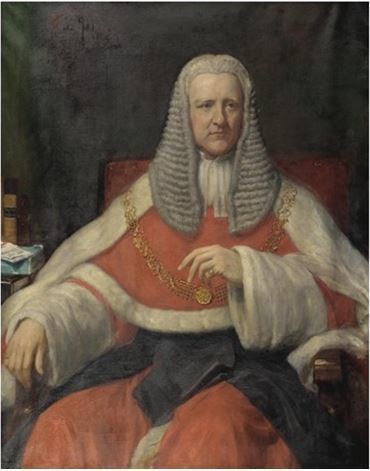 | ||
The Chief Justice of the Common Pleas was the head of the Court of Common Pleas, also known as the Common Bench or Common Place, which was the second-highest common law court in the English legal system until 1875, when it, along with the other two common law courts and the equity and probate courts, became part of the High Court of Justice. As such, the Chief Justice of the Common Pleas was one of the highest judicial officials in England, behind only the Lord High Chancellor and the Lord Chief Justice of England, who headed the Queen's Bench (King's when the monarch was male).
Initially, the position of Chief Justice of the Common Pleas was not an appointment; of the justices serving in the court, one would become more respected than his peers, and was therefore considered the "chief" justice. The position was formalised in 1272, with the raising of Sir Gilbert of Preston to Chief Justice, and from then on, it was a formally-appointed role, similar to the positions of Lord Chief Justice and Chief Baron of the Exchequer. When the High Court was created in 1875, each of the three common law courts became separate divisions of it, each headed by the person who had led the respective court before the merger. When the Lord Chief Justice and Chief Baron died in 1880, the three common law divisions (Queen's Bench, Exchequer, and Common Pleas) were merged, and John Coleridge, the Chief Justice of the Common Pleas, became Lord Chief Justice, and the offices of Chief Justice of the Common Pleas and Chief Baron were abolished.
Legacy
The Wetherspoon pub in Keswick, Cumbria is named "The Chief Justice of the Common Pleas".
